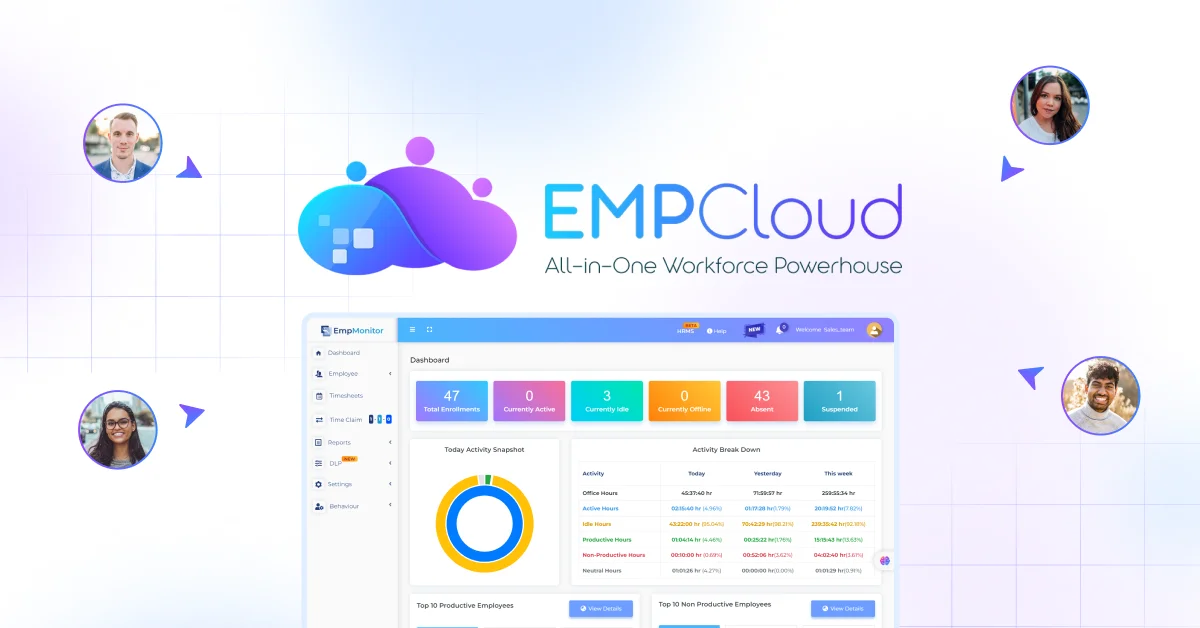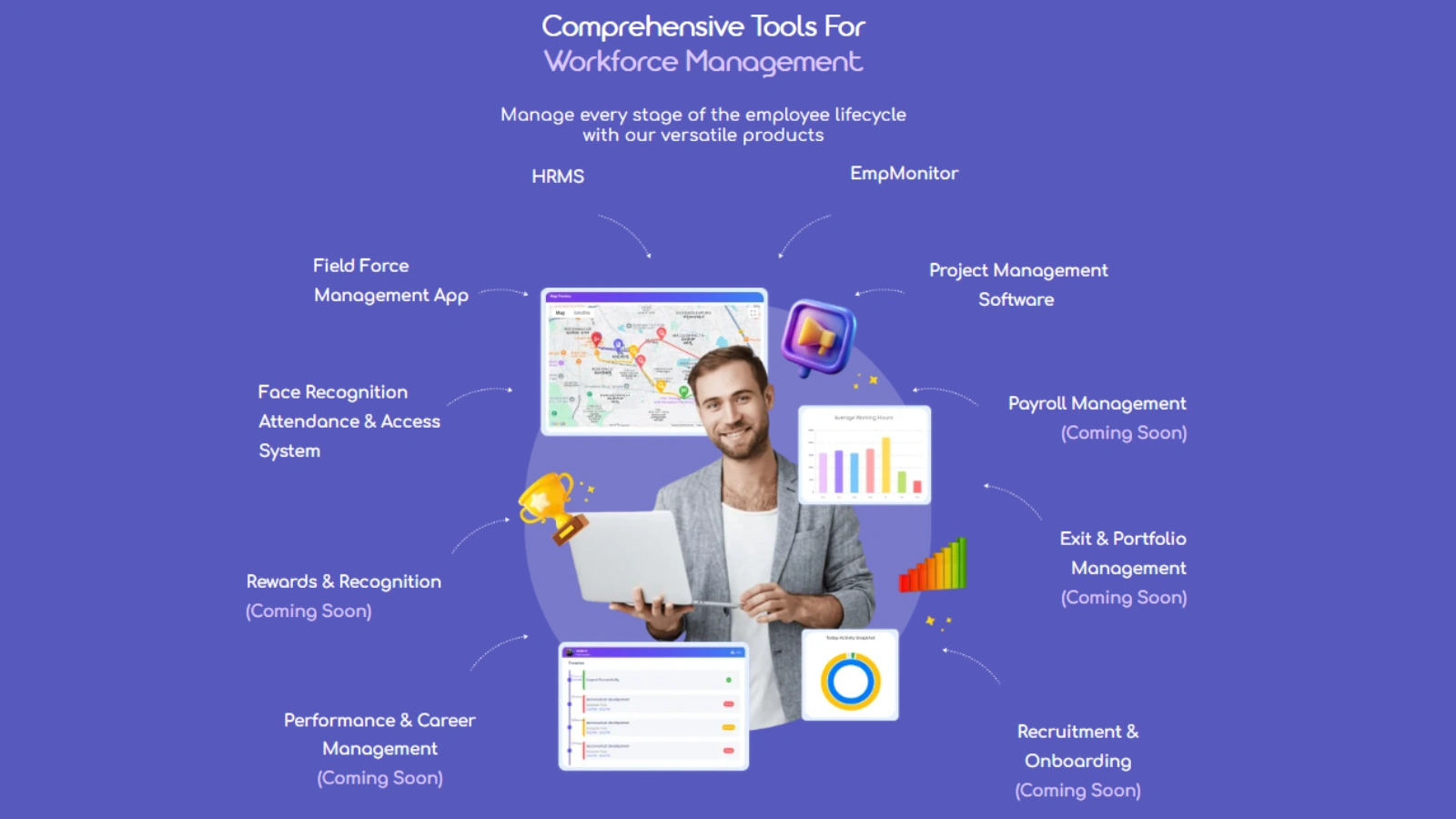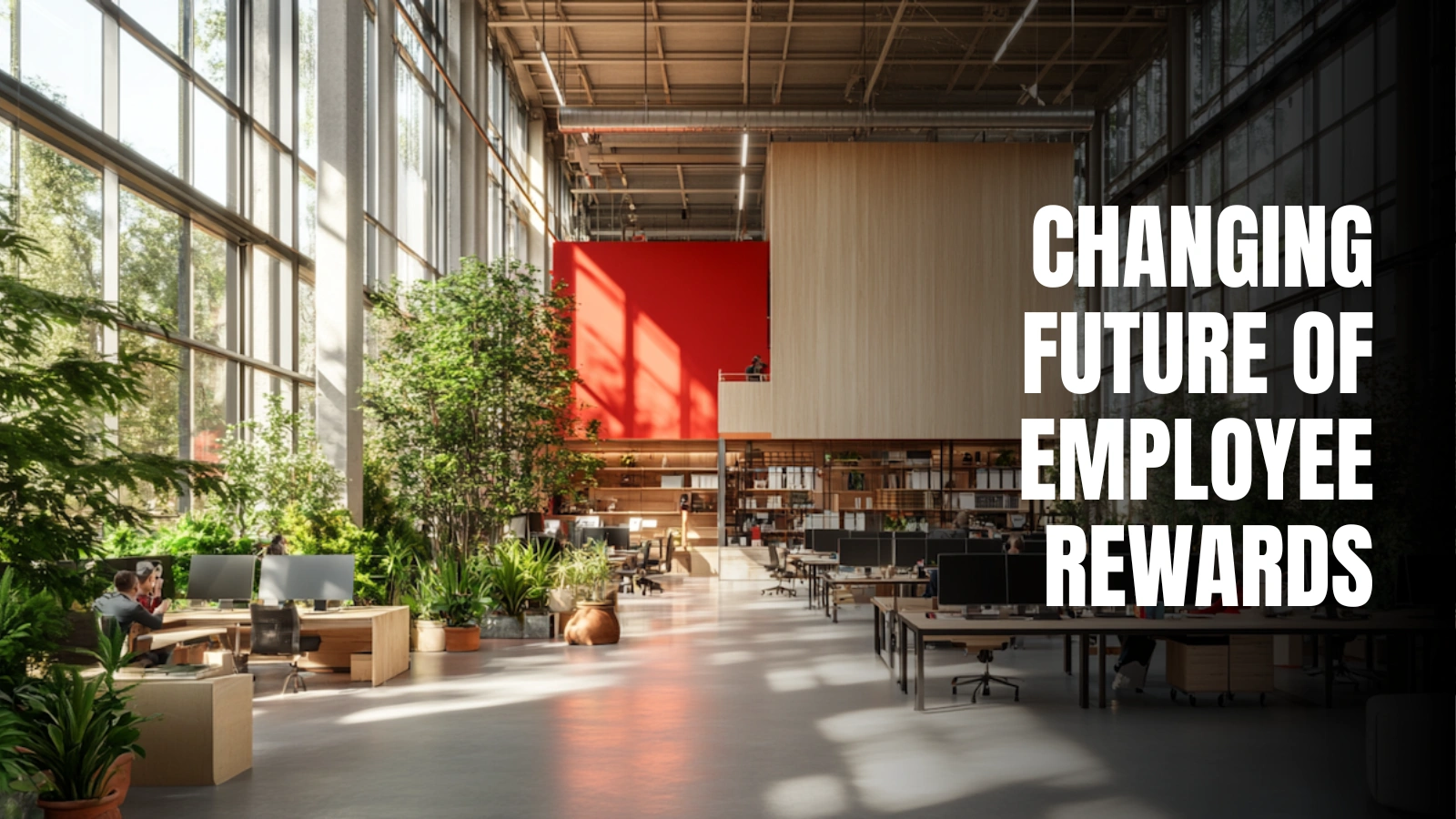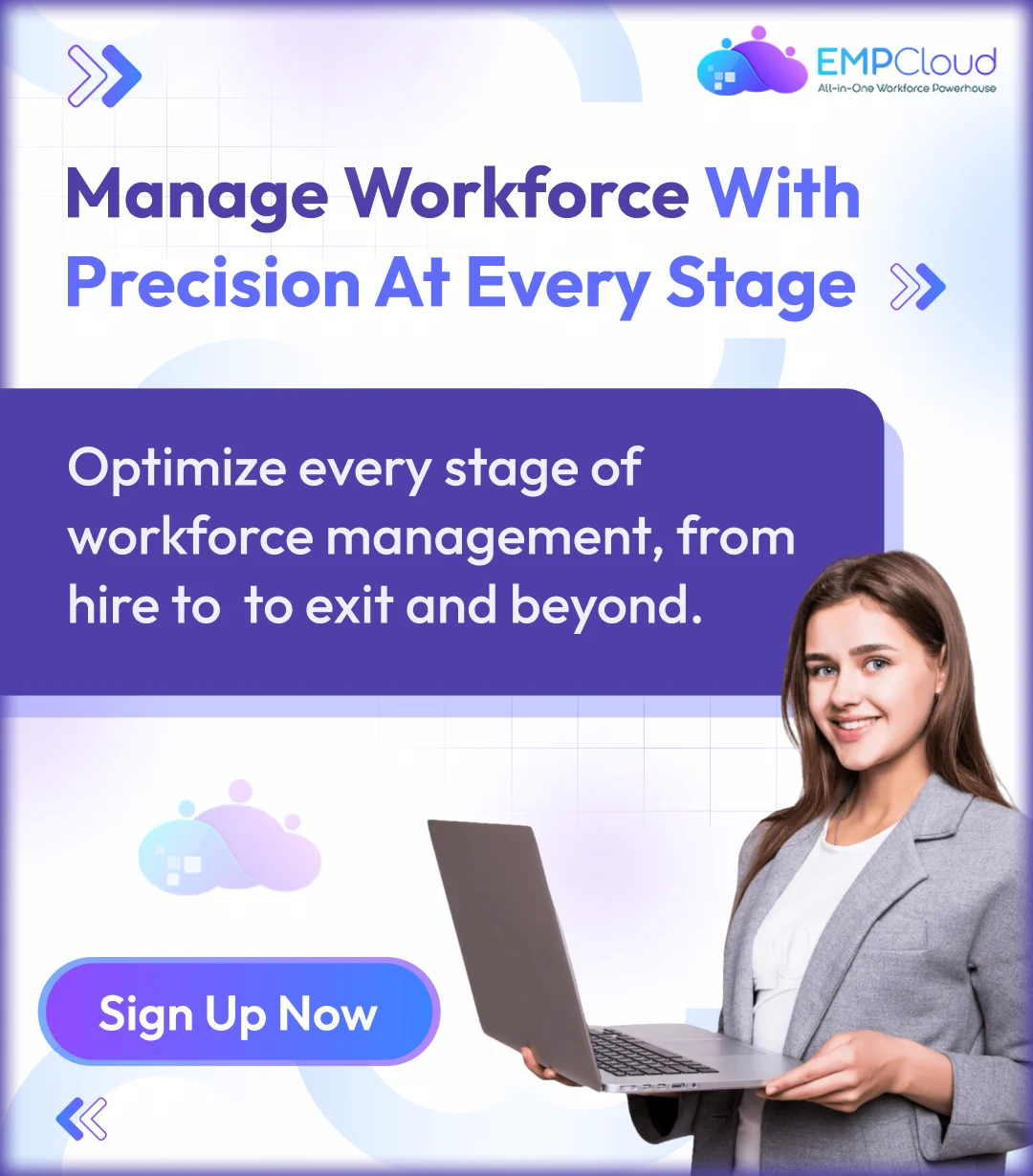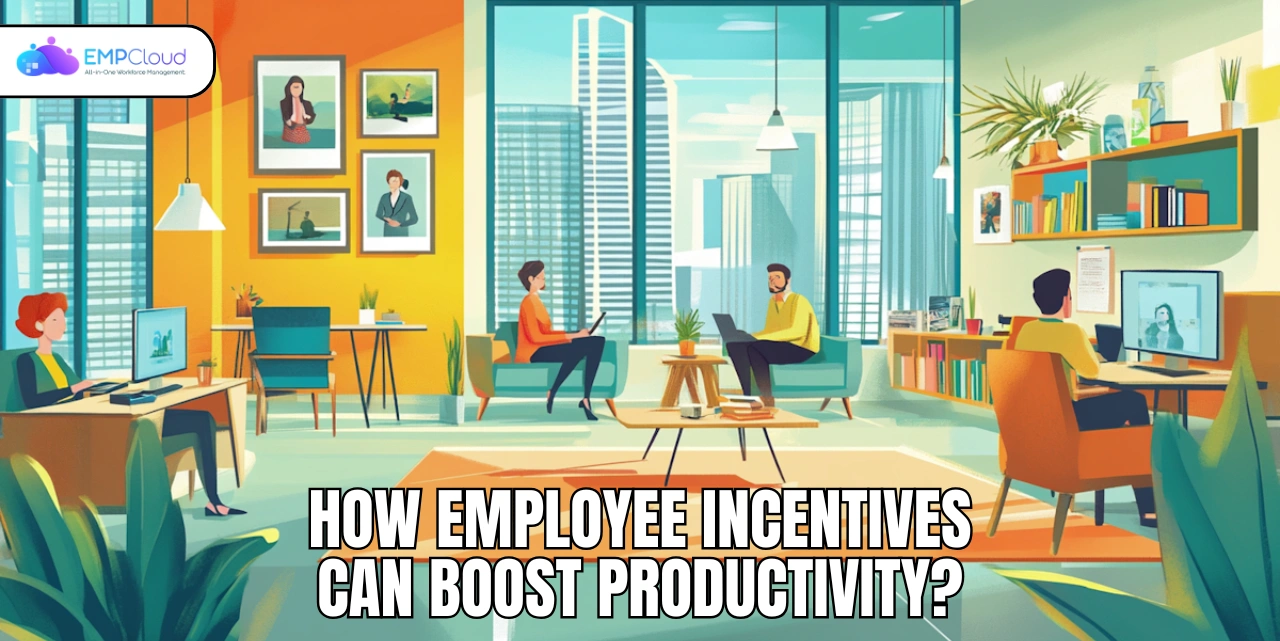
Many companies struggle to keep their employees motivated. While a good salary is important, it is not always enough to keep people engaged and productive. This is where employee incentives come in. When businesses reward their employees for their hard work, it boosts motivation, improves job satisfaction, and helps retain top talent.
But simply offering a bonus once in a while is not enough. To make a real impact, companies need a well-planned employee incentives program that keeps employees happy and encourages them to perform at their best.
In this article, we will explore different types of employee incentives, share data-driven insights, and introduce tools that help businesses track employee productivity and design better reward systems.
In a hurry? Listen to the blog instead!
Why Employee Incentives Matter?
A motivated workforce is the backbone of a successful business. When employees feel valued, they work harder, show more dedication, and contribute positively to the company’s success.
Additionally, a well-structured employee incentives program fosters a positive work culture. Employees who receive recognition for their work feel a stronger connection to their organization, leading to increased loyalty and reduced hiring costs.
Companies that implement effective employee incentive programs see improvements in overall productivity and workplace morale. A well-rewarded workforce is more likely to be engaged, which results in better performance and higher job satisfaction. It makes employee incentives a key factor in business success.
Another factor is that incentives help businesses attract top talent. A company with a strong employee incentives program stands out in the job market, making it easier to recruit skilled professionals. Employees today value more than just salaries—they seek workplaces that recognize and appreciate their efforts.
Types Of Employee Incentives
Not all incentives have to be financial. Businesses can use a mix of rewards to keep employees engaged and motivated. Here are some effective ways to reward employees:
1. Monetary Incentives
Employees value a variety of incentives, including financial rewards such as bonuses, performance-based raises, and commission-based incentives. A structured reward system, like an employee points system, can also effectively motivate staff by allowing them to earn points redeemable for cash, gift cards, or other benefits. This approach can be integrated into a Leave Management System, offering additional flexibility and recognition for hard work and dedication.
Companies that offer competitive financial rewards as part of their employee incentive programs attract and retain top talent. A well-designed monetary incentive structure ensures that employees feel valued and motivated to achieve their goals.
2. Recognition and Appreciation
Simple words of appreciation can go a long way. Publicly recognizing employees through awards, shout-outs in meetings, or appreciation emails can boost morale. Businesses with strong employee rewards programs report higher levels of employee engagement.
Recognizing employees for their achievements reinforces positive behavior and encourages continued high performance. Creating an environment where employees feel seen and appreciated fosters loyalty and long-term commitment.
A key advantage of recognition incentives is their cost-effectiveness. A simple ‘thank you’ or acknowledgment can be as powerful as financial rewards, driving engagement. Companies that integrate employee incentives into their daily operations see sustained improvement in performance.
3. Career Growth Opportunities
Employees value opportunities for professional growth. Offering mentorship programs, leadership training, and skill development courses can be an excellent way to incentivize employees. It not only benefits them but also strengthens the company’s workforce.
Incentive programs for career advancement provide employees with clear pathways to success. These programs help businesses build a highly skilled workforce while ensuring employee satisfaction and retention.
One effective way to incorporate this into an employee incentives program is by offering tuition reimbursement for courses related to an employee’s field. Employees who feel supported in their professional growth stay with the company long-term.
4. Flexible Work Arrangements
In today’s work culture, flexibility is an incentive. Allowing employees to work remotely, have flexible hours, or take mental health days can significantly improve productivity and job satisfaction. It is especially relevant for businesses using employee monitoring software, as it helps ensure productivity while allowing employees to work in ways that suit them best.
Providing employees with autonomy over their schedules creates a positive work environment. Flexible work arrangements are among the most sought-after employee incentives, as they promote work-life balance and reduce stress levels.
Businesses that embrace flexibility as part of their employee incentive programs see better job satisfaction and retention rates.
5. Wellness and Perks
Providing health and wellness incentives, wellness programs, or even simple perks like free healthy snacks in the office can keep employees happy and motivated. These incentives show that a company cares about its employees’ well-being.
Companies investing in wellness programs as part of their employee incentive programs see lower absenteeism rates and improved overall employee performance. Employees who feel physically and mentally well are engaged and productive.
According to a Harvard study, for every dollar spent on wellness programs, companies save $3.27 in healthcare costs. It highlights why wellness perks should be a key component of employee incentives.
Also Read!
The Role Of EmpCloud In Employee Incentives
EMPCloud is a complete, cloud-based workforce management platform that unites employee monitoring, productivity analytics, and HR automation in one intuitive suite. It captures real-time data across the entire employee lifecycle, from onboarding to exit.
EMPCloud gives businesses the objective insights they need to design fair, transparent, and highly motivating incentive programs.
Key EMPCloud Features That Drive Fair, Meaningful Incentives.
Real-Time Productivity Tracking
- Monitor task completion, project milestones, and individual output in one view.
- Use the data to reward top performers with performance bonuses, public recognition, or career-development opportunities.
Automated Time & Attendance
- Contactless facial recognition attendance and automated timesheets eliminate manual errors.
- Employees with perfect attendance earn perks such as extra PTO, flexible hours, or perfect attendance awards.
Geo-Location & Field Workforce Visibility
- Track field or remote teams via live GPS and activity logs.
- Off-site employees who exceed regional targets can receive travel stipends or remote work upgrades.
Compliance & Security Monitoring
- Built-in insider-threat detection and policy-compliance tools highlight employees who follow security protocols.
- Reward them with cybersecurity certifications or leadership roles in safety initiatives.
Project & Task Management Integration
- Link individual contributions to project outcomes via Gantt charts and Kanban boards.
- Teams that deliver early can celebrate with team outings or spot bonuses.
Comprehensive HR Automation
- Streamlined leave requests, payroll, and exit management reduce administrative friction.
- HR gains the bandwidth to focus on strategic incentives such as personalized development plans.
To further improve workforce management, EMPCloud’s comprehensive suite includes HRMS, EmpMonitor, and upcoming features like Payroll Management and Recruitment & Onboarding.
This ensures that every stage of the employee lifecycle is efficiently managed, providing a holistic approach to employee incentives and engagement.
Making Incentives Work: The Right Strategy
A great employee recognition program is not just about offering rewards; it’s about understanding what truly motivates employees. Companies should focus on:
- Personalization: A company may offer a bonus for hitting sales targets but allow employees to choose between a cash reward or additional vacation days, depending on what matters most to them.
- Transparency: A team leader communicates that meeting specific project deadlines will result in a team outing. Everyone knows the criteria and works towards achieving the goal.
- Fairness: Using tools like EmpCloud, a company tracks each employee’s performance objectively and ensures that rewards, like bonuses or extra leave, are based on measurable outcomes, not favoritism.
- Consistency: An organization offers quarterly performance-based incentives, such as gift cards or recognition during team meetings, ensuring motivation is sustained year-round.
- Timeliness: If an employee exceeds expectations by completing a high-profile project ahead of schedule, they receive immediate recognition, such as a public shout-out or a gift card, reinforcing the connection between effort and reward.
- Diversity of Incentives: A company may offer multiple incentives like flexible work hours, extra vacation time, public recognition, or training opportunities, allowing employees to choose the reward that best suits their personal goals.
- Feedback and Improvement: Employees improve and earn additional rewards, such as higher bonuses or a leadership opportunity.
The Future Of Employee Incentives
The future of employee incentives is evolving as companies rethink how they motivate their workforce. Traditional bonus structures are often insufficient to retain top talent, especially with the competition in the job market. Many organizations are now adopting AI-driven employee monitoring tools, which enable more personalized incentive programs. These tools help analyze employee performance, identify key success metrics, and deliver rewards that resonate with individual employees, ensuring that incentives align with what motivates each team member.
As remote work continues to rise, businesses reward employees as part of their employee incentives strategy, such as wellness programs, flexible hours, and virtual recognition. These incentives cater to employees’ well-being and work-life balance, which are especially important in a remote environment. Companies that embrace these modern employee incentive strategies will have a significant edge in maintaining a motivated, engaged, and loyal workforce.
Furthermore, adopting a holistic approach to employee incentives—combining monetary and non-monetary rewards—can strengthen workplace culture and boost long-term employee satisfaction. Empowering employees with the autonomy to select rewards and offering personalized experiences fosters a sense of value and belonging. This approach, aligned with employee incentives, ultimately enhances retention by making employees feel valued and supported in their preferences.
Conclusion:
An effective employee incentives program is essential for maintaining high employee morale and boosting productivity. Tailored incentives that suit the needs of individual employees can significantly improve motivation. Tools like EmpCloud enable businesses to ensure fairness and transparency, making reward systems more effective. A strategic approach to employee incentives contributes to a more engaged and loyal workforce.
As remote work continues to shape the business landscape, non-monetary incentives such as wellness programs and flexible work hours have gained popularity. These incentives cater to employees’ evolving needs and help improve overall job satisfaction. Companies that implement these rewards can create a more motivated team.
A balanced rewards system combining financial and non-financial incentives helps create a productive and positive workplace culture. Allowing employees to choose rewards that align with their preferences ensures they feel valued. This personalized approach fosters long-term retention and strengthens employee engagement, ultimately contributing to business success. Embracing these trends helps companies stay competitive.
FAQs
What are the most effective employee incentives for remote teams?
Remote teams often respond well to non-monetary incentives like flexible work hours, wellness programs, and virtual recognition events. These rewards focus on well-being and work-life balance, which are crucial for remote employees.
What are the potential risks of over-relying on monetary incentives?
Over-relying on monetary incentives can lead to a transactional environment where employees work solely for others. It may reduce long-term motivation and hinder intrinsic, sustained productivity.
How can companies measure the success of their employee incentive programs?
Companies can track success by analyzing performance data, employee satisfaction surveys, and retention rates. Monitoring engagement levels and comparing productivity before and after implementing incentives can also gauge effectiveness.
What role does employee feedback play in shaping incentive programs?
Employee feedback is critical for refining incentive programs. Listening to employees’ preferences and incorporating their suggestions helps tailor rewards, ensuring the program remains effective and appreciated.
Can non-monetary rewards be as effective as financial ones?
Yes, non-monetary rewards such as public recognition, career development opportunities, and flexible schedules can be as impactful as financial incentives. These rewards contribute to employee well-being and job satisfaction.
Can employee incentives improve team collaboration?
Yes, team-based incentives like group bonuses or team outings can enhance collaboration. Working together toward a shared goal and for collective achievements strengthens teamwork and the work environment.
How do employee incentives impact company culture?
Employee incentives that align with company values and focus on recognition and personal growth help create a positive, supportive culture. It leads to higher job satisfaction, loyalty, and a more collaborative and productive work environment.



